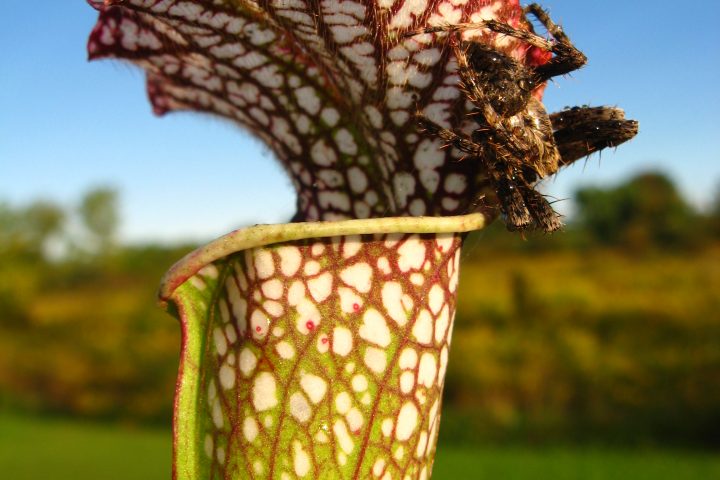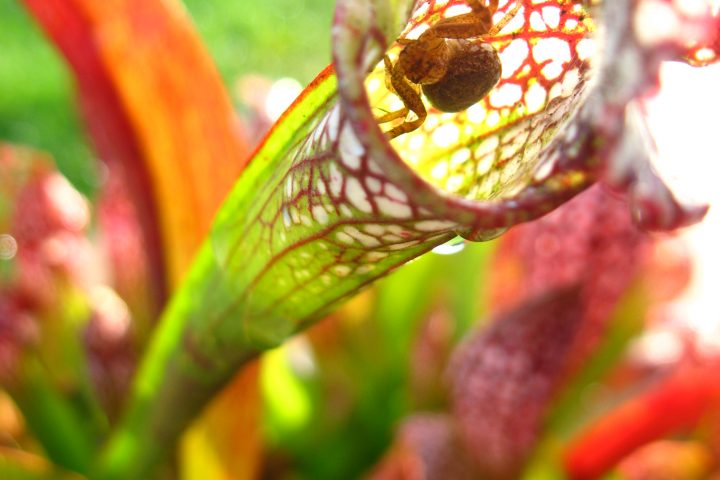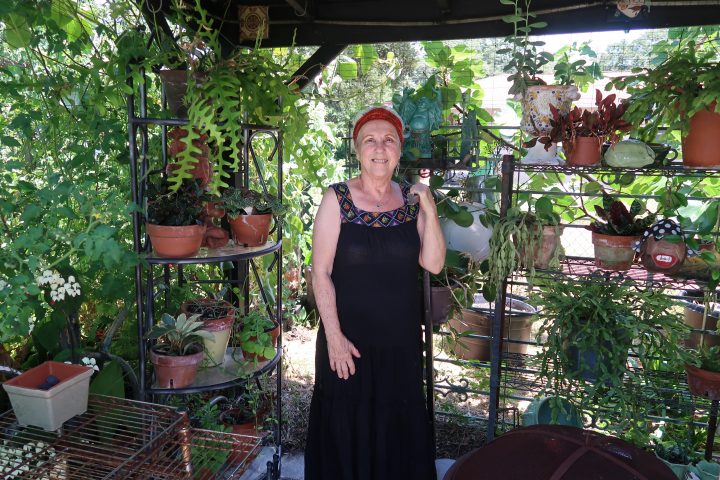Welcome to Florida’s version of winter. It’s a great time to be working in the gardens, making the rest of the country envious of our ability to grow year round. Gardening with chickens can be very enriching for all parties involved. I love watching my chickens scratch around in the dirt, aerating the soil and picking out hungry damaging bugs. My gardens benefit from the natural fertilizer that the chickens deposit. The chickens receive tasty snacks in the garden and benefit from obtaining shelter by the many elements that make up a garden. However, the key to gardening with chickens is balance.
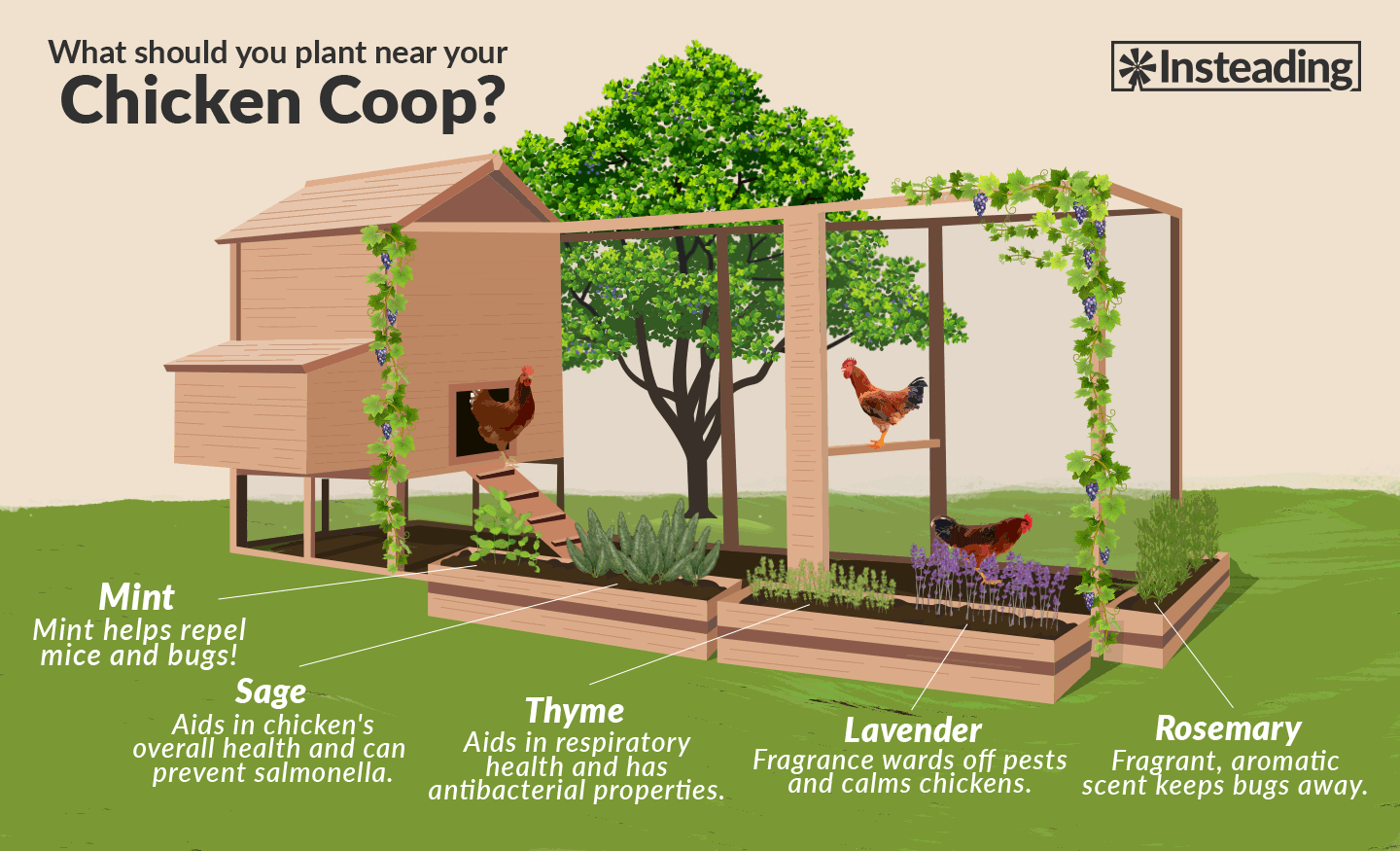
Those of us lucky to have backyard poultry in Florida generally don’t have to worry about protecting our flock from the cold. Chickens can tolerate a dry cold much better than our hot and humid seasons. This is due to their inability to perspire which would remove heat from their bodies. During our mild winters adding a little extra mulch from our gardens or straw to their night quarters is usually sufficient. For extra cold nights, providing wind breaks or possibly heating elements for your coop or at least your water bowls is necessary if you want to maintain your coops health and egg production.
For the rest of the year the heat is our biggest hurdle. Free range chickens will often be seen trying to submerge themselves in cool moist soil underneath a canopy of foliage. My chickens, which live primarily in a large coop, are provided play sand and piles of rich composted soil to offer them a variety of substrates to cool off in. Providing multiple sources of water is essential. Chickens that are approaching over heating will pant and raise their wings away from their body. Increasing air flow naturally by moving structures or by adding fans can help combat the heat.
Moving from New York I sadly learned that Florida seems to have more wildlife then my home town. Gardeners with backyard chickens need to protect their birds year round from predators. Predators include not only wildlife but also domestic pets. Chickens, especially my bantams, have many possible predators. Aside from most birds of prey, most predators of chickens are nocturnal. Having a secure night house that is impenetrable is necessary if you want to keep your birds safe.
One of the highest rates of predation happens at dawn and dusk. For chickens that are free ranging, encourage them to put themselves in the night house before it gets dark. Some chickens, who are heavy foragers, will need to be lured away so they are protected from crepuscular predators such as opossums, raccoons, skunks, foxes, coyotes, wolves, minks, weasels, snakes and house cats.

My first and only incident of predation was the second day of brining home my first four chickens. They were all in the screened in chicken coop, when I went to the front yard to check the mail. When I returned I saw a red-shouldered hawk sitting on a fence post close to the coop. As I approached the coop, I saw that the hawk had flown towards the coop and grabbed a chicken through the mesh. The chicken died immediately, but because of the mesh the hawk was unable to acquire its meal. It all happened in the time frame of me retrieving the mail.
That day I added a two-foot-tall second barrier around the entire coop. Now predators would have to put their talons or claws through the first layer of fencing and then zig zag to reach the chickens. I would hope the chickens would have the rationality to step at least a few inches away to protect themselves.
Natural landscape and physical structures in your garden will serve as protection when the chickens have access to the entire yard. My coop door is always open, so the chickens that are free ranging can quickly run back into their night house if they get startled. In addition to shrubs and trees, you chickens will take advantage of tall structures, such as the top of chicken coops, garages, arbors and work benches to become unreachable by ground predators. The natural landscape of trees and shrubs will provide not only shelter but a visual barrier. Being cryptic in the garden is a good thing.
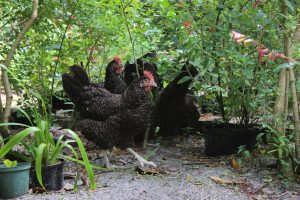
Rather than putting up an additional fence made out of lumber I could have planted bushes of herbs to act twofold. In addition to a physical barrier herbs scattered throughout your property can add to chickens general health, stimulate egg production, act as a natural de-wormer or simply taste great in your next kitchen adventure. Catnip, fennel, feverfew, lavender and rosemary can act as a natural insect repellent. This is especially true if the chickens have access to not only eating them but also rubbing up against them.
Nasturtiums, one of my favorites due to their no-pamper sprawling attributes, have antibiotic and antiseptic properties and serve as a natural de-wormer for chickens. Their greens and flowers taste great in human (or chicken) salads. Growing cover crops like buckwheat, clover, rye, millet and oats will improve the soil, limit unwanted weeds and still act as great fodder for the chickens and other livestock in your yard.

Luckily for us, not all edibles can be foraged by chickens. Many types of fruit, from those that grow on trees to melons that have tough skins, are not accessible to chickens. On the other hand many types of greens are right at chicken beak level, making it almost impossible to grow enough for both the human and feathered members of the family. Many types of greens and vegetables will need to be fenced in, keeping the free range chickens and other animals out.
Once you are done with the peels of those hard to access fruits, your chickens will be glad to help turn the leftovers into energy for themselves and compost for your garden. My chickens love melon rinds.
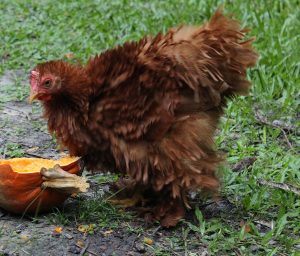
Between each new growing season, you can open up the gate and let the chickens do their chores including knocking down dying plants, aerating the soil, sweeping the area for pests and lightly fertilizing the garden area.
Growing some greens and vegetables in the area that they have access to would be greatly appreciated by the chickens, but I wouldn’t hold up hope for entering any of those edibles into the state fair.
Hand feeding your chickens some vegetables and greens will slow down their pace if you do choose to transplant or plant greens in the same area as your free range chickens. Other greens which resemble weeds to many people include chickweed, dandelions, plantains, purslane and thistle, are edible for humans and will be readily snacked on by your flock.
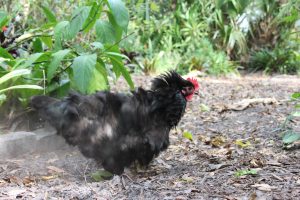
You will need to protect young tender plants from your feathered garden helpers, no matter how much space they are given. This can be easily accomplished with the use of a small meshed area, glass cloche or plastic greenhouse. Older gardens and adult plants, usually only need a quick raking to get things looking pre-chicken visit, since free range chickens don’t usually cause harm to established gardens.
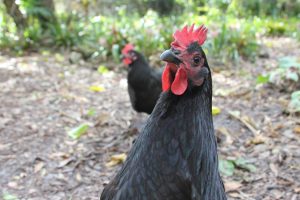
Since you want a perfect balanced ecosystem researching space requirements for your nomadic flock is imperative. If the flock of chickens is too large or if there is not enough space, your gardens will have craters and bare patches from over foraging, and visible feces which potentially cause bad odor. For standard breeds 250 square feet per bird is an adequate size for free range chickens that have access to your gardens. For bantams about half that size is required to keep garden appearances up.
Chickens, due to their foraging and locomotive behaviors, are a garden gift. The key to balancing free range chickens, flowers and vegetables is to remember that they do not know how to distinguish what you want them to leave alone or eat. In addition to perimeter fences, groundcover such as juniper, mint, roses and sweet woodruff are dense enough to keep chickens from scratching through the soil.
The free range chickens in my backyard could have turned into ticking backyard bombshells with their scratch and snack behavior. With a little foresight, some wire mesh and appropriate plants my gardens are producing and thriving. It is not despite my chickens, but because of them, that my gardens look so lush.
To learn more about homesteading and chickens, check out my newest book: 99½ Homesteading Poems
 Originally published in Florida Gardening Magazine Fall 2014.
Originally published in Florida Gardening Magazine Fall 2014.

